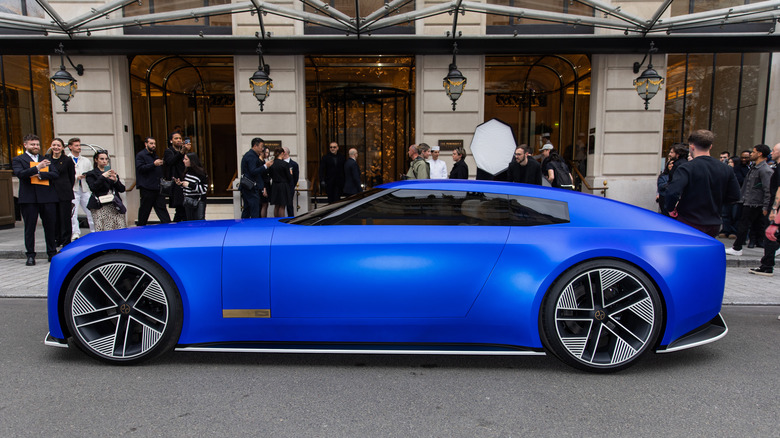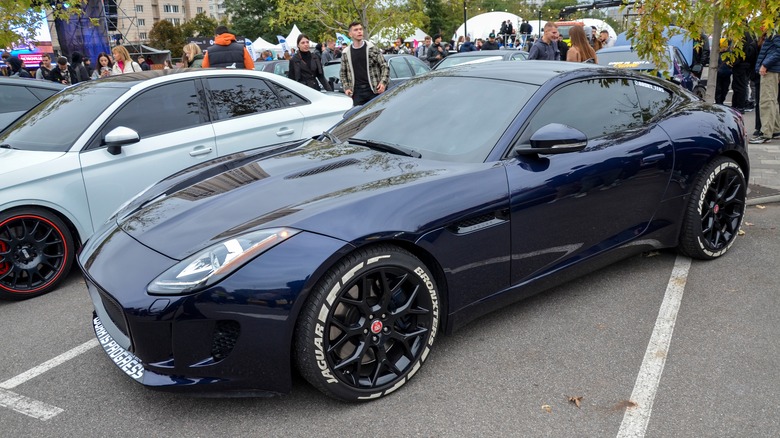Where Are Jaguar's Cars Made, And Who Owns The Company Today?
Jaguar has long been synonymous with sleek, low-slung cars sporting a leaping cat emblem on the hood. The luxury brand is a British institution, so it may come as a surprise to learn that Jaguar Land Rover (JLR) is actually owned by Tata Motors, an Indian vehicle manufacturing company. Still, most of its cars have traditionally been produced in Britain, and the company has multiple sites there dedicated to designing, engineering, and manufacturing.
In addition to Britain, JLR also has vehicle plants in Slovakia, India, and Brazil, along with a joint-venture facility in China and seven other technology hubs around the world. It doesn't have any factories in the U.S., even though American buyers represent about one-quarter of the brand's market. Although it continues to maintain production sites in the U.K. in Warwickshire, Coventry, Solihull, Castle Bromwich, and a site near Wolverhampton, Jaguar is undergoing a major transformation. In addition to its CEO, Adrian Mardell, stepping down in July 2025, the brand announced that it will replace its current line-up of cars with its highly anticipated EV, the Jaguar I-Type.
Jaguar's shift to manufacturing electric vehicles
The Jaguar F-Type model will bring the automaker's gas sports car era to a close, and the F-Pace is the last of the Jaguar legacy models to be built at its Solihull facility before the brand transitions to EV production. In addition to the F-Type, Jaguar has also stopped producing its XE and XF models at its historic Castle Bromwich plant in the U.K. Similarly, JLR wrapped up its contract with Austrian manufacturer Magna Steyr, which produced the E-Pace and I-Pace, in 2024.
Jaguar hopes to reinvent itself as a futuristic, luxury car manufacturer, stoking hype through the likes of its 2024 "Copy Nothing" viral ad campaign and the ultra-glam appearance of its bold, brash new concept car, the Type 00, at Paris Fashion Week in March 2025. This is a high-stakes gamble for JLR, which will launch its new, all-electric, four-door Jaguar I-Type into the global luxury car market in 2026. All eyes are set on this model, and Jaguar announced that production on the 2027 Jaguar is expected to begin at the Solihull facility in England in 2025.

